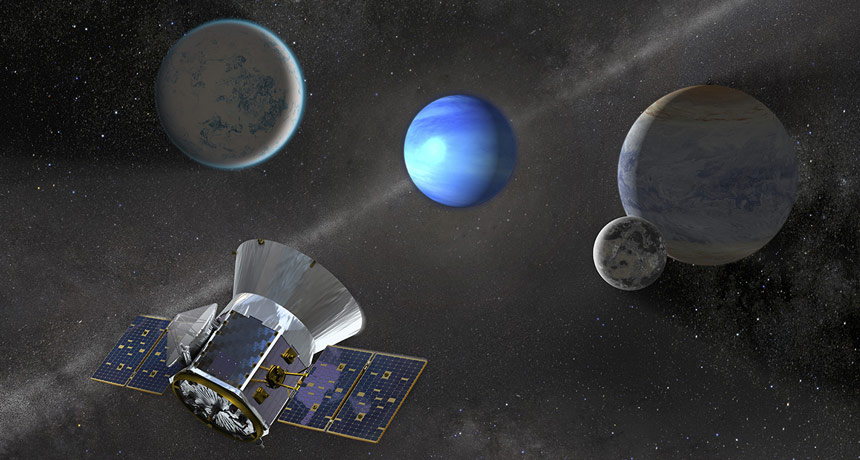
WHOLE NEW WORLDS The TESS exoplanet hunting telescope caught eight new planets in its first four months of observing. Three are shown in this artist’s illustration.
NASA’s Goddard Space Flight Center (edited by MIT News)

WHOLE NEW WORLDS The TESS exoplanet hunting telescope caught eight new planets in its first four months of observing. Three are shown in this artist’s illustration.
NASA’s Goddard Space Flight Center (edited by MIT News)